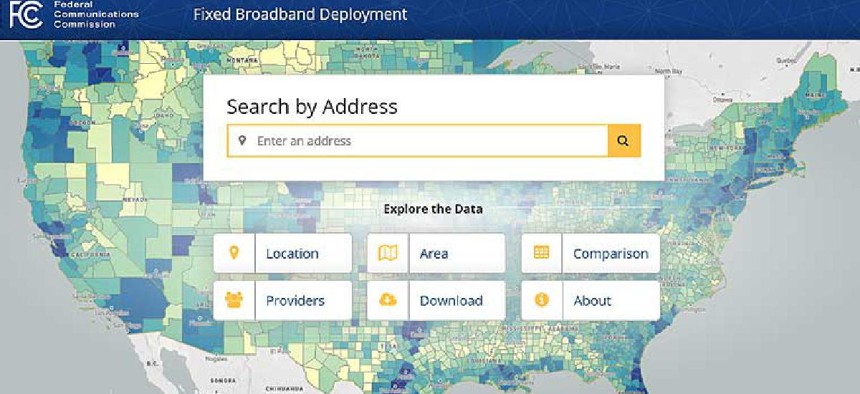FCC sees data as key to closing digital divide

To ensure Americans have reliable access to high-speed internet, the Federal Communications Commission aims to build a comprehensive, user-friendly dataset on broadband availability.
With broadband internet access becoming an education, health and economic necessity, the Federal Communications Commission wants to quickly close the digital divide. But first, it needs accurate maps that show exactly which locations have access.
Historically, the FCC relied on internet service providers to self-report coverage. The resulting fixed broadband deployment data had often been criticized for inaccuracies resulting from metrics that allowed ISPs to report service across a census block even if only one home was connected.
In order to better identify gaps in high-speed internet services, the FCC assigned its newly formed Broadband Data Task Force to develop the necessary tools to gather this information.
According to task force Chair Jean Kiddoo, the FCC will continue to collect data from providers, but it will supplement that information with verification and challenge data from the public, state, local and tribal governments, other federal agencies as well as third parties, such as companies specializing in broadband mapping and data collection.
“The Commission will not only collect more data; it will collect better data,” Kiddoo said in a task force presentation. Minimum service speeds, maximum buffer sizes for fixed service along with infrastructure and drive-test data will give the FCC accurate broadband data, she said. Additionally, the commission will refine the data over time through crowdsourcing, audits and verification and enforcement actions.
“With these new data and tools, the Commission will produce vastly more granular and accurate broadband deployment maps, which in turn will allow the Commission to target Universal Service Funding more precisely and produce better data for Commission reports and analyses,” Kiddoo said.
The FCC has already brought on an expert data architect and design firm to work with the commission’s own data and IT teams to design the internal databases, systems and public-facing portals to support advanced broadband data collection and the resulting availability maps, FCC acting Chairwoman Jessica Rosenworcel wrote in a March 16 blog.
The commission has also issued a request for information for the creation of the broadband serviceable location fabric -- a common dataset of all U.S. locations where fixed broadband internet access service can be installed -- that will form the foundation for the location- or address-based reporting.
This complex, data-driven evaluation of broadband access involves building new systems, processes and supporting materials, and it will not happen overnight.
Meanwhile, the FCC is asking consumers to share their broadband experience by filling out a form on the FCC’s site. The simple form asks for basic contact information along with a three-to-five sentence description of connection problems and what could be done to solve them.
This tool “will allow consumers to share their experience with the Task Force to let us know when broadband has (and has not) reached where they live,” Rosenworcel said. “Opening communication with consumers early in this process is so important because the best broadband map won’t be built in Washington, it will be built by all of us, with input from everyone, everywhere.”






